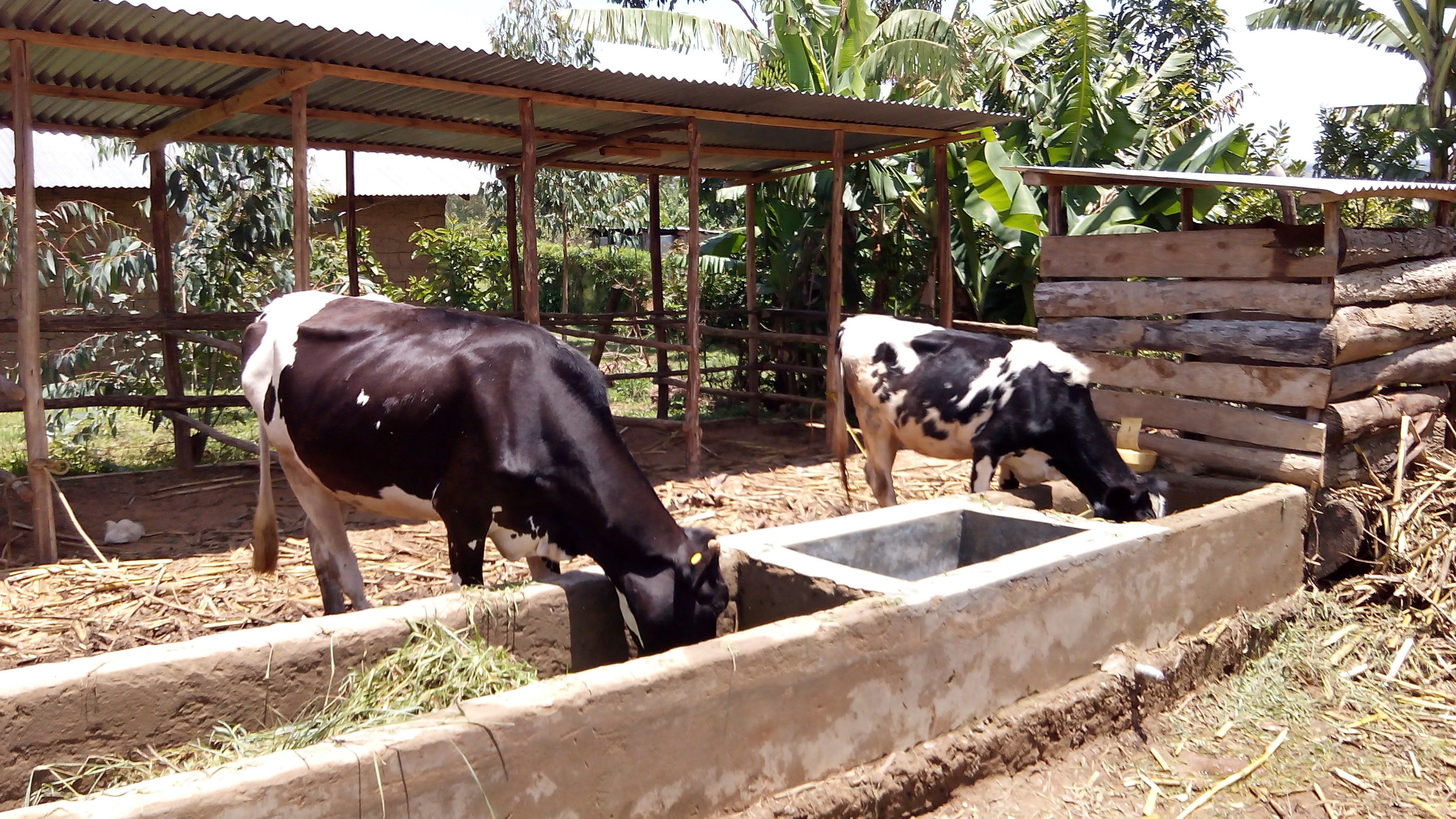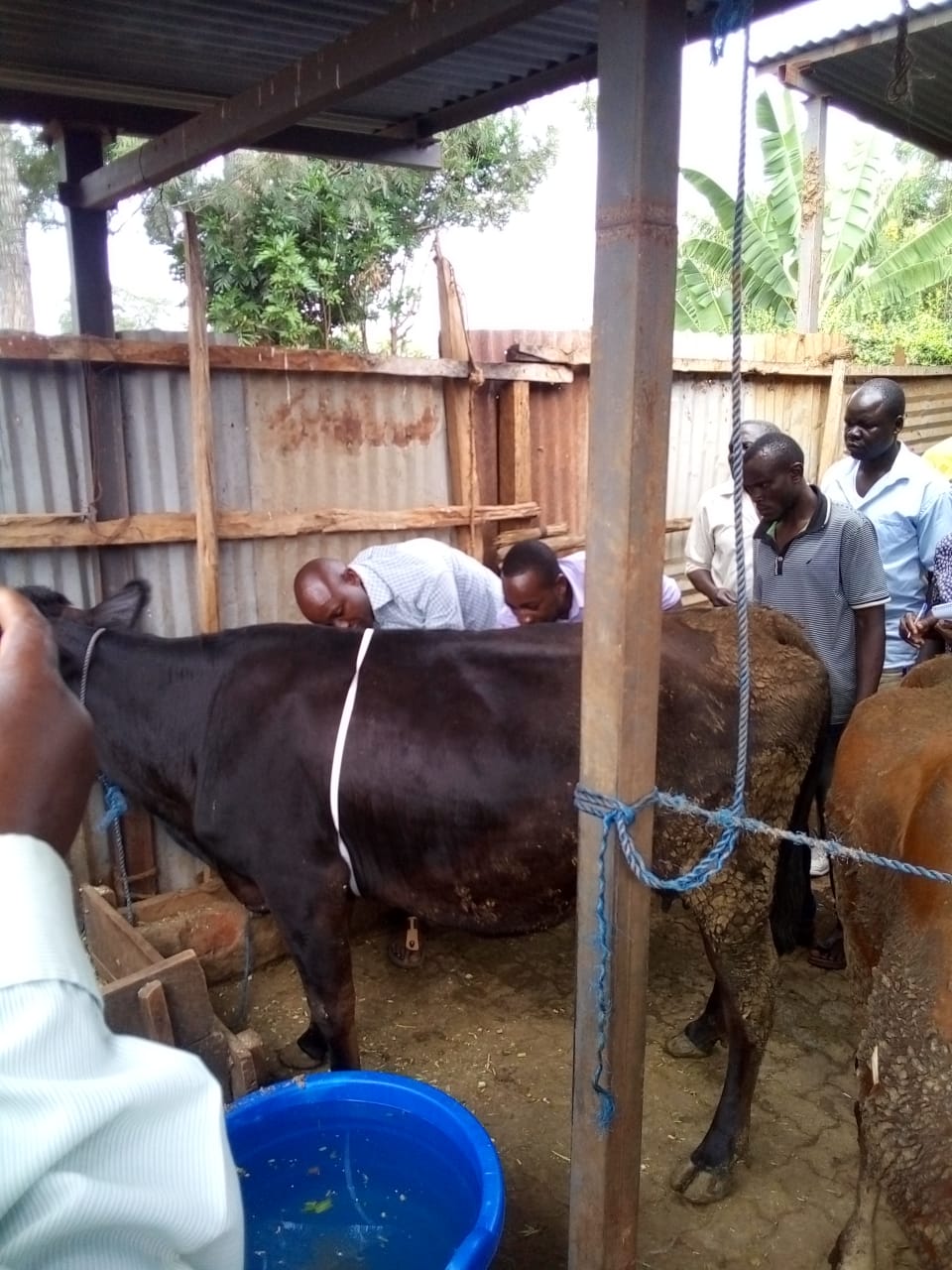Secrets to proper feeding of dairy cows

In this post I am going to show you how to properly feed dairy cows to get maximum milk yield and economic returns. The same practices are used by successful dairy farmers to achieve high milk production and have been proven to work time and again. Of importance to the dairy cow are nutritional requirements, quantities and qualities of feed, feed sources, rations and other dynamics. You will need to be equiped with information about the cows’ milking performance, body size, body condition, stage of lactation, feeding habits and feed preferences to be able to properly feed the cows.
Feeding of dairy cows at various physiological stages in the cow’s lifecycle is covered in another article. Here are the 25 secrets of proper feeding of dairy cows that makes all the difference.
Dry matter intake
- Dry matter is the part of the feedstuff that remain if all water is removed. It is the most important part as nutrients are contained in there. The key to high milk yield is ensuring that the cow consumes large quantities of the dry matter.
- Depending on the quality of the diet, a cow will take in dry matter equivalent to 2 to 4% of its body weight. It will take a lower amount if the quality is low, about 2 to 3%, and a higher amount if the quality is high, about 3 to 4%. Poor quality feed is digested slower.
- The cow is a milk factory and the more it takes in raw materials in terms of dry matter, the more milk it produces. High dry matter intake guarantees high nutrient intake, therefore select good quality feed.
Roughage Intake
- Roughages are feedstuff high in fibrous indigestible material. Examples are forages such as hay, pasture, fodder and silage. They are the cheapest source of nutrients for ruminants.
-

Weighing a bale of hay - The indigestible fibrous material helps in passage of food and waste products through the gut. It maintains rumen distention, which stimulates motility, cud chewing and salivary flow. Saliva buffers rumen against changes in acidity. Products from fibre digestion are important for milk fat production.
- Roughage intake depends on forage quality and size of cow. A cow can eat 3% of its body weight as dry matter from good quality hay but only manage 1.5% from poor hay.
- Roughage quality is partly determined by fibre levels, which increases as the forage crop matures. It also varies with plant species, stage of maturity, when harvested, crop season, storage systems and losses.
- High fibre content lowers the quality of roughages by lowering palatability, protein levels and digestibility. Undigested feed cannot pass out of the rumen which prevents the cow from consuming more feed thus reducing dry matter intake.
- Dry matter intake from roughages determines the amount and type of concentrate required in the ration. A minimum level of roughage, usually not less than 40% should be included in the ration. Very low roughage intake leads to rumen acidosis, milk fat depression and twisted stomachs.
- Base your feeding program on high consumption of high-quality roughages by having a constant supply throughout the year.
Concentrate Intake
- Concentrates are feed supplements with high nutrient density and low fibre content. Examples include grains, legumes, dairy meal, and industrial and milling byproducts.
- Concentrate requirements depend on milk yield, body weight and roughage intake. The better the quality of roughage intake, the less concentrates required.
- Studies have shown that offering high quantities of concentrate increases dry matter intake and energy hence increasing milk yield. However, this works best when forage requirements are met.
Nutrient requirements
- Nutrients are substances that provide nourishment essential for the maintenance of life and growth. They support various body processes such as production, reproduction, growth and general body maintenance.
- Dairy cows need a daily supply of all nutrients.
- The age, production level and liveweight determine the nutritional requirements of a cow.
- Nutrients required by the cow are energy, protein, fibre, vitamins, minerals and water. The key ones are energy and proteins but shortage of any other can limit performance.
- A balanced diet is one that supplies all the nutrients required by the cow at correct quantities
Energy
- Energy is key requirement for growth, lactation, maintenance and pregnancy. It determines milk yield and composition. Energy is also used in physical activities like walking, running, chewing the food etc.
- Carbohydrates are the main sources of energy for dairy cows. Forage sources that are high in energy content include grasses such as napier grass, kikuyu grass, Rhode’s grass, maize leaves, and other plants such as sweet potato vines, cassava leaves etc. Concentrate sources include grains such as maize, wheat, barley and their byproducts.
Proteins
- Proteins are nutrients that builds and repairs tissues. They are vital for growth, reproduction and milk production.
- Milk synthesis demand large amounts of amino acids and dairy cows must therefore get enough protein to supply them.
- Along with overall protein requirements, dairy cows have specific amino acid requirements, the most limiting being lysine and methionine.
- Legumes such as Lucerne, Desmodium and fodder trees such as Leucaena, Calliandra, Sesbania and Gliricidia are the main roughage protein sources. Concentrate protein sources include industrial byproducts such as soya bean meal, sunflower and cotton seed cake etc. Non-protein sources such as urea are good when supplemented with sufficient energy in the diet.
- Select feed sources with high protein content and richest amino acid profile
Minerals and Vitamins
- Minerals are inorganic nutrients that are required in small quantities for metabolic and structural functions in the body. In dairy cows they are mainly needed for teeth and bone formation, milk production and muscle function. Calcium and phosphorus are the main ones.
- Calcium to phosphorus ratio is important as an imbalance can affect nutrient intake and digestion.
- Roughages are often deficient in minerals especially phosphorus.
- All minerals can be incorporated in feed supplements.
- Vitamins are organic compounds required in minute quantities for the body to function well. They are essential for bone formation, milk production, reproduction, disease resistance and enzyme production
- Green forages normally supply all vitamins that are needed by the cow.
- Animals housed and reared in intensive systems will normally require vitamin supplements.
Water
- Of all the nutrients, water is usually the one likely to be neglected. It is essential in digestion, nutrient transfer and body temperature regulation. Maximum intake of dry matter depends on continuous access to fresh, clean and cool water. Decreasing water intake results in decline in dry matter intake and a huge decrease in milk yield.
- Lactating cows require 60 to 70 litres per day for maintenance and an additional 5 litres of water for each kg milk produced. Cows are normally thirsty and hungry immediately after milking and need more water in hot weather.
- Provide water in a well-lit area within 15 metres of the feed trough.
Formulating rations
- Ration formulation aims to provide precise quantities of particular nutrients that make a balanced diet for the cows.
- It starts with estimating the dry matter intake of the cow based usually on about 3% of its body weight.
-

Weighing the dairy cow - All rations should be a combination of roughages and concentrates from at least one feedstuff rich in carbohydrates, proteins, vitamins and minerals
- Accurate information on dry matter and nutrient content of feedstuff is a critical preliminary step in formulating diets and having a profitable nutrition program.
- Employ the services of an animal nutritionist to formulate diets that are palatable to the cows.
- Changes in the type and quality of forages can affect the amount of nutrients cows receive, therefore reformulate rations whenever there are changes in the type or quality of forage.
- Of the many possible forage and concentrate combinations that make a balanced diet, aim for the most cost-efficient.
Feed Presentation
- Feed refused by the animal is useless. Get cows to ingest as much dry matter as possible by ensuring that the feed is acceptable and palatable.
- The more feed a cow eats, the more milk she can produce. Encourage the cows to eat as many meals a day as possible in the course of the day.
- Dairy cattle do not like change, they like consistency. Provide a consistent diet, feeding and milking them at the same times of the day respectively.




Comments
RSS feed for comments to this post